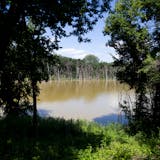Q: As much as I enjoy catching sight of oriole nests in the winter when all the leaves are gone, I've never seen orioles building their nest. What material do they use?
A: Most birds are fairly secretive as they go about nest building, to avoid being spotted by a predator, such as squirrels and crows, that might return later on a raiding visit. The female gathers grasses, wool, bark from vines, twine, fishing line, even cellophane, then pokes them into an elaborate knot and tangle shape. Many orioles will visit an old nest to recycle its materials.
Nectar-dependent?
Q: We feed hummingbirds all summer and get quite a few at our eight feeders. We're wondering whether the little birds become dependent on them and will have problems when we're away for much of August this year.
A: I don't think you need to worry about the hummingbirds that have been visiting your feeders. By August, there are so many flowers in bloom in backyards and in the wild, and so many tiny insects around, that your local hummingbirds shouldn't experience any problems finding enough calories to support their highly energetic lifestyles.
Cardinal craziness
Q: I almost dread the arrival of spring, because it means the local cardinal will start up his crazy behavior of pecking at our window for hours at a time. I close the blinds, but this doesn't stop him. What can I do?
A: A number of readers are concerned about birds bashing windows at this time of year. With their hormones reaching their seasonal peak, male birds are focused on holding their breeding territory, and this means driving others of their species away. Your cardinal caught a glimpse of himself in your window one day and perceived it as another cardinal trying to take over his territory. As much as he pecks at that red bird reflected on the glass, it keeps coming back. The only way to deter such a bird — many species do this, including robins, cardinals, blue jays, goldfinches, even bluebirds — is to stop the reflectivity of the window it attacks. The usual recommendation is to place cardboard on the outside of the window and, if the bird then moves to another window, move the cardboard there.
One reader cut large shapes out of paper and taped these to the outside of his window. It doesn't matter what you use, as long as it stops the bird from seeing its reflection. Putting a stop to this behavior also will benefit the bird, which can harm itself in its relentless attacks. The cardboard can come down in the summer, after the bird's hormones subside.
Frog whacking
Q: I watched a good-sized gray bird land on a branch along our lakeshore, with a little frog in its beak. It proceeded to bash the frog against the branch before eating it. What was this bird up to?


